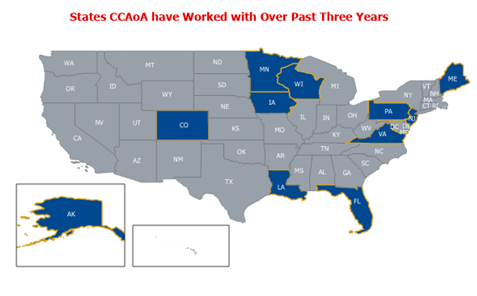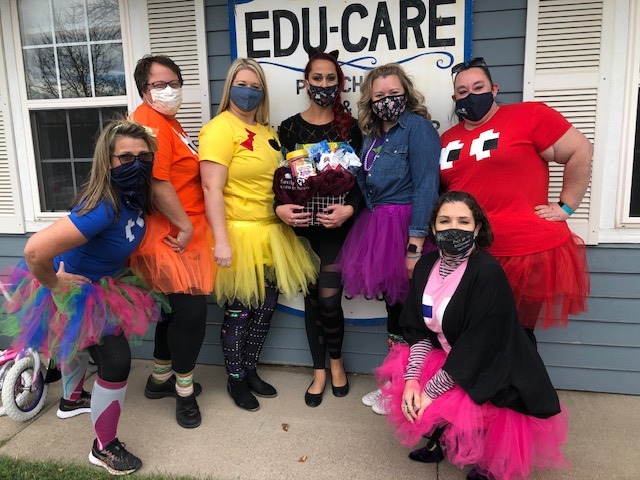
Child care is an important space where state agencies can offer support and resources to provide healthier food choices for children. However, figuring out how to target those supports can be a challenge. The Child and Adult Food Care Program (CACFP) is a federal program that reimburses child care programs for serving nutritious meals and snacks to eligible children in their care. The healthy food CACFP provides for children in child care programs can benefit them by bolstering their development and helping to establish beneficial, nutritious eating habits. As CACFP participation dropped during the pandemic, addressing food insecurity was a challenge for the providers who remained open. CACFP-sponsoring programs operating during COVID-19 continue to provide a critical public good by educating young children and supporting them with nourishing food.
However, CACFP is traditionally underutilized in states for several reasons. Eligible child care providers:
-
May not know about CACFP
-
May not know that children in their care qualify for CACFP
-
May worry about extra paperwork or time it takes to participate in CACFP
For the past three years, CCAoA has partnered with Nemours Children’s Health to map CACFP coverage gaps in the context of food access and family poverty to target communities where CACFP participation can make a significant impact. Both CCAoA and Nemours play a unique role in this partnership:
-
CCAoA uses geographic information systems (GIS) maps to tell a story that is compelling to policymakers, state government agencies, and other decision-makers.
-
Nemours provides intensive technical assistance to state organizations around coalition building, health guidelines and practices, and good data practices.
Over the past three years, CCAoA has mapped CACFP participation across 11 states. In the summer of 2021, we worked primarily with the state department of health and early childhood organizations in Colorado, Iowa, Louisiana, Minnesota, and Maine to examine child care supply alongside food deserts and family poverty amidst the impact of COVID-19.
Are there enough child care providers participating in CACFP? When looking at the 2020-2021 states’ data alone, three of five states have between 34% - 46% of child care providers participating in CACFP. The goal of our data collection and map creation is to help states identify underserved communities that would greatly benefit from CACFP expansion in child care. We collected food deserts information from the USDA Food Access Research Atlas and families who may benefit from CACFP from U.S. Census’ American Community Survey 5 year estimates table B17022. We also included additional datasets (depending on the state’s interest), such as the Community Needs Index and Map the Meal Gap, to add more context to highlight communities for potential target areas for CACFP expansion.
How are states using these GIS story maps?

These story maps serve as a tool to help coalition building and CACFP promotion work. This tool can allow stakeholders to take a data-driven approach in understanding the successes and potential gaps of their state’s CACFP program. Some states have been able to use these story maps as a springboard for creating a CACFP outreach plan.
The story maps also include recommendations that can further promote and expand CACFP participation. Several strategies include:
-
Understand the barriers to CACFP participation, particularly in areas of low food access and high poverty concentration. Hold community listening sessions, conduct provider surveys, or reach out directly to non-participating providers to learn why they are not participating.
-
Boost awareness of CACFP among non-participating providers. Partner with CACFP sponsor organizations, Child Care Resource and Referral Agencies, the state CACFP Office, and other groups that work directly with child care providers to get the word out about CACFP.
-
Reach out to state policymakers to share the needs of families, along with recommendations to leverage federal relief dollars to support the quality improvement of child nutrition.
But we’re not done! We are currently working with seven new states to continue building this work/illustrating the gaps. In the meantime, visit our Mapping CACFP Participation page to learn more about each state’s child care CACFP participation status.





